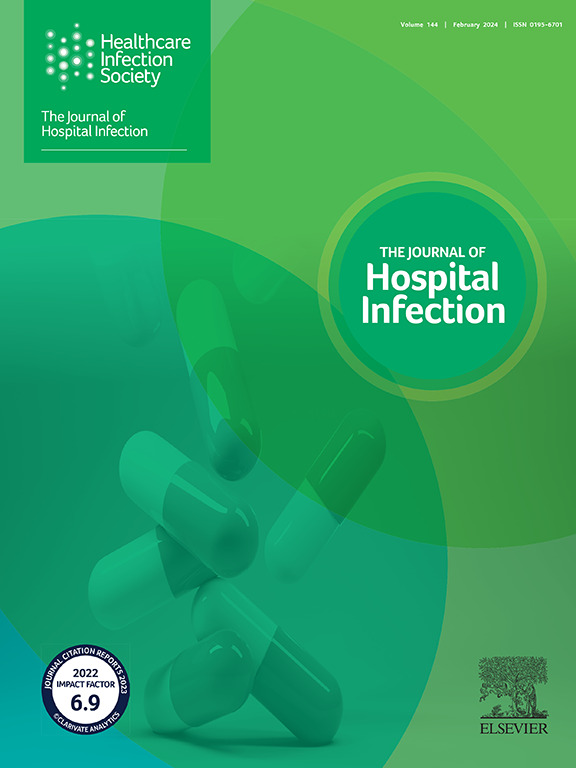Factors associated with antibiotics for respiratory infections in Swiss long-term care facilities
IF 3.9
3区 医学
Q1 INFECTIOUS DISEASES
引用次数: 0
Abstract
Background
Long-term care facility (LTCF) residents are twice as likely to receive antibiotics compared with elderly living in the community, and studies have reported up to half of prescriptions in LTCFs as inappropriate.
Aim
To identify factors contributing to general and inappropriate antibiotic prescription among LTCF residents with lower respiratory tract infections (LRTIs).
Methods
In this prospective, multicentric, observational study, residents with LRTIs were recruited among 32 LTCFs in Western Switzerland during winter 2022–2023. Residents underwent lung ultrasound (LUS) within three days of LRTI onset, serving as the pneumonia diagnosis reference standard. Multivariate logistic regression and backward selection were used with P < 0.1 cut-off to identify factors among demographics, vital signs, diagnostic tests, and LTCF characteristics associated with (i) antibiotic prescription and (ii) inappropriate prescription.
Findings
A total of 114 residents were included, 63% female, median age 87 years. Fifty-nine (52%) residents underwent diagnostic tests: 50 (44%) polymerase chain reaction (PCR) for respiratory viruses and 16 (14%) blood test with C-reactive protein and/or blood count. Sixty-three (55%) residents received antibiotics. Factors associated with antibiotic prescriptions were Rockwood Clinical Frailty Scale score ≥7, oxygen saturation <92%, performing a blood test, rural LTCFs, and female physician. Among residents receiving antibiotics, 48 (74%) had inappropriate prescriptions, with performance of respiratory virus PCR test as the only protective factor.
Conclusion
Whereas half of LRTI residents received antibiotics, falling within lower ranges of European LTCFs prescription rates (53–80%), most antibiotic prescriptions were inappropriate. Utilization of diagnostic tests correlates with lower overall and inappropriate prescription, advocating for their use to optimize prescription practices in LTCFs.
瑞士长期护理机构使用抗生素治疗呼吸道感染的相关因素。
目的确定导致下呼吸道感染(LRTI)的长期护理机构(LTCF)住院患者开具一般和不适当抗生素处方的因素:方法:前瞻性多中心观察研究。2022-2023年冬季,瑞士西部32家长期护理机构招募了患有下呼吸道感染的住院患者。住院患者在LRTI发病三天内接受肺部超声波检查(LUS),作为肺炎诊断的参考标准。为了在人口统计学、生命体征、诊断测试和 LTCF 特征中找出与(i)抗生素处方和(ii)不适当处方相关的因素,我们使用了多变量逻辑回归和反向选择,P 值截断为 结果:我们纳入了 114 名住院患者,其中 63% 为女性,中位年龄为 87 岁。总体而言,59 名住院患者(52%)进行了诊断测试:50人(44%)进行了呼吸道病毒 PCR 检测,16 人(14%)进行了 CRP 和/或血细胞计数血液检测。共有 63 名住院患者(55%)接受了抗生素治疗。与抗生素处方相关的因素有:CFS≥7(aOR 6.8,95% CI 1.5-24.4)、血氧饱和度<92%(3.5,1.4-8.8)、进行血液检测(0.1,0.0-0.6)、农村 LTCF(0.3,0.1-0.7)和女医生(0.3,0.1-0.8)。在接受抗生素治疗的住院患者中,48 人(74%)的处方不当,唯一的保护因素是进行了呼吸道病毒 PCR 检测(0.1,0.0-0.4):虽然半数患有 LRTI 的住院患者接受了抗生素治疗,属于欧洲 LTCF 处方率较低的范围(53%-80%),但大多数抗生素处方是不恰当的。诊断检测的使用与处方总量和处方不当率的降低有关,因此提倡使用诊断检测来优化 LTCF 的处方实践。
本文章由计算机程序翻译,如有差异,请以英文原文为准。
求助全文
约1分钟内获得全文
求助全文
来源期刊

Journal of Hospital Infection
医学-传染病学
CiteScore
12.70
自引率
5.80%
发文量
271
审稿时长
19 days
期刊介绍:
The Journal of Hospital Infection is the editorially independent scientific publication of the Healthcare Infection Society. The aim of the Journal is to publish high quality research and information relating to infection prevention and control that is relevant to an international audience.
The Journal welcomes submissions that relate to all aspects of infection prevention and control in healthcare settings. This includes submissions that:
provide new insight into the epidemiology, surveillance, or prevention and control of healthcare-associated infections and antimicrobial resistance in healthcare settings;
provide new insight into cleaning, disinfection and decontamination;
provide new insight into the design of healthcare premises;
describe novel aspects of outbreaks of infection;
throw light on techniques for effective antimicrobial stewardship;
describe novel techniques (laboratory-based or point of care) for the detection of infection or antimicrobial resistance in the healthcare setting, particularly if these can be used to facilitate infection prevention and control;
improve understanding of the motivations of safe healthcare behaviour, or describe techniques for achieving behavioural and cultural change;
improve understanding of the use of IT systems in infection surveillance and prevention and control.
 求助内容:
求助内容: 应助结果提醒方式:
应助结果提醒方式:


